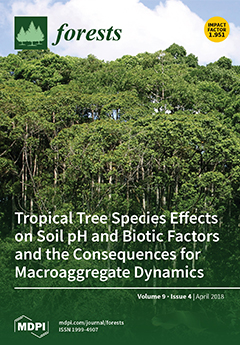Revealing forest drought response characteristics and the potential impact factors is quite an important scientific issue against the background of global climate change, which is the foundation to reliably evaluate and predict the effects of future drought. Due to the high spatial heterogeneity of forest properties such as biomass, forest age, and height, and the distinct differences in drought stress in terms of frequency, intensity, and duration, current studies still contain many uncertainties. In this research, we used the forests in Yunnan Province in Southwest China as an example and aimed to reveal the potential impacts of forest properties (i.e., stock volume) on drought response characteristics. Specifically, we divided the forest into five groups of stock volume density values and then analyzed their drought response differences. To depict forest response to drought intensity, the standardized precipitation evapotranspiration index (
SPEI) was chosen as the explanatory variable, and the change in remote sensing-based enhanced vegetation index (deficit of
MODIS-EVI,
dEVI) was chosen as the response variable of drought stress. Given that the
SPEI has different time scales, we first analyzed the statistical dependency of
SPEIs with different time scales (1 to 36 months) to the response variable (i.e.,
dEVI). The optimal time scale of
SPEI (
SPEIopt) to interpret the maximum variation of
dEVI (
R-square) was then chosen to build the ultimate statistical models for the five groups of stock volume density. The main findings were as follows: (1) the impacts of drought showed hysteresis and cumulative effects, and the length of the hysteresis increased with stock volume densities; (2) forests with high stock volume densities required more soil water and were therefore more sensitive to the changes in water deficit; (3) compared with the optimal time scale of
SPEI (
SPEIopt), the
SPEI with the commonly used time scale (e.g., 1, 6, and 12 months) could not well reflect the impacts of drought on forests and the simulation error of
dEVI increased with stock volume densities; and (4) forests with higher stock volume densities were likely to experience a greater risk of degradation following higher atmospheric concentrations of greenhouse gases (Representative Concentration Pathway (RCP) 8.5). As a result, both the time scale of the meteorological drought index and the spatial difference in forest stock volumes should be considered when evaluating forest drought responses at regional and global scales.
Full article





